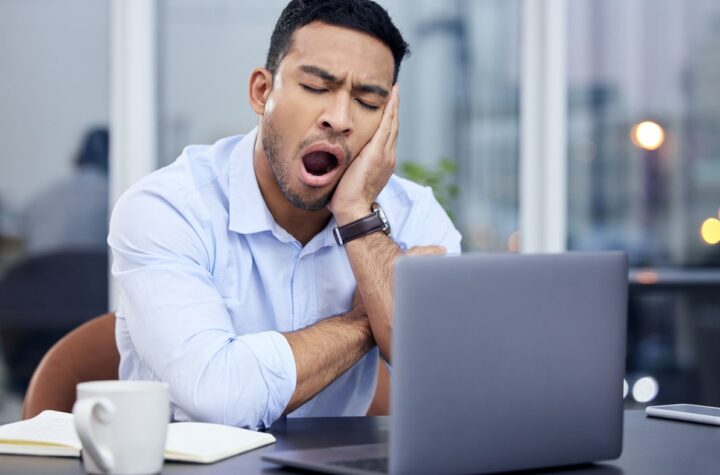
Conquering the Crick: Effective Strategies to Relieve Neck Pain
A crick in the neck, also known as acute cervical strain, is a common and often frustrating experience. It can manifest as a sudden, sharp pain that limits your neck’s range of motion. While typically not serious, a crick in the neck can disrupt your daily activities and cause significant discomfort. This comprehensive guide explores various strategies to effectively relieve a crick in the neck and prevent future occurrences.
Understanding the Culprit: Causes of Neck Cricks
Several factors can contribute to a crick in the neck:
- Poor Posture: Slouching, hunching over your computer, or holding your head in an awkward position for extended periods can strain the neck muscles and lead to a crick.
- Muscle Strain: Overexertion or repetitive movements can overload the neck muscles, causing tiny tears that manifest as pain.
- Sleeping Position: An uncomfortable sleeping position that strains your neck can trigger a crick.
- Stress: Stress can lead to muscle tension, including in the neck, potentially contributing to a crick.
- Whiplash: A sudden jolt to the head and neck, such as from a car accident, can cause a crick.
Finding Relief: Strategies to Soothe a Neck Crick
If you find yourself with a crick in your neck, here are some effective strategies to promote healing and alleviate pain:
- Rest: Avoid strenuous activities that might aggravate the strain. Take time to rest and allow your neck muscles to heal.
- Heat Therapy: Applying a heating pad or warm compress to the affected area for 15-20 minutes at a time can help relax tight muscles and improve blood flow, promoting healing.
- Ice Therapy: In the initial stages (first 24-48 hours), applying ice packs wrapped in a towel for 15-20 minutes at a time can help reduce inflammation and pain.
- Gentle Stretching: Once the initial pain subsides, gentle neck stretches can improve flexibility and range of motion. It’s important to avoid forceful stretches and prioritize gentle movements that feel good.
- Over-the-Counter Pain Relievers: Medications like acetaminophen or ibuprofen can help manage pain and inflammation.
Remember, if the pain is severe, persistent, or accompanied by other symptoms like fever, numbness, or tingling, consulting a healthcare professional is crucial.
Preventing Future Cricks: Maintaining Neck Health
Here are some tips to prevent future neck cricks:
- Maintain Good Posture: Being mindful of your posture throughout the day is crucial. Sit with your back straight and shoulders relaxed, and avoid slouching.
- Take Breaks and Stretch: If you work at a desk job, take frequent breaks to get up and move around. Perform gentle neck stretches throughout the day to maintain flexibility.
- Ergonomics: Ensure your workspace is ergonomically designed. Your monitor should be at eye level, and your chair should offer good back support.
- Manage Stress: Chronic stress can contribute to muscle tension. Practice stress-management techniques like yoga, meditation, or deep breathing exercises.
- Strengthening Exercises: Regularly performing neck-strengthening exercises can help improve muscle endurance and prevent future strains.
Remember, prevention is key! By incorporating these strategies into your daily routine, you can significantly reduce your risk of experiencing a painful neck crick.
Frequently Asked Questions (FAQ)
Q: How long does a crick in the neck typically last?
- A: A crick in the neck usually resolves within a few days (2-7 days) with proper care.
Q: Can I sleep on my stomach if I have a crick in my neck?
- A: Sleeping on your stomach can strain your neck further. Opt for sleeping on your back with a pillow that properly supports your head and neck.
Q: Should I see a doctor for my neck crick?
- A: If the pain is severe, persistent (lasting longer than a week), or accompanied by other concerning symptoms like fever, numbness, or tingling, consulting a healthcare professional is recommended. They can diagnose the underlying cause and recommend the most appropriate treatment course.
Q: What are some strengthening exercises for my neck?
- A: There are various neck-strengthening exercises. It’s advisable to consult a physical therapist to learn proper techniques for safe and effective neck exercises.
Remember, listening to your body and seeking professional guidance when necessary is crucial for optimal neck health and preventing future discomfort.
Beyond the Neck Crack: Addressing Underlying Issues and Long-Term Management
While the strategies mentioned above can effectively address a typical crick in the neck, sometimes the pain might indicate a deeper underlying issue. Here’s how to approach neck pain in a more holistic way:
-
Consult a Healthcare Professional: If your neck pain is severe, persistent, or recurs frequently, consulting a healthcare professional like a doctor or physical therapist is crucial. They can perform a thorough examination to identify the underlying cause of your pain, such as:
- Arthritis: Degenerative changes in the neck joints can cause pain and stiffness.
- Herniated disc: A bulging disc in the spine can compress nerves in the neck, leading to pain, numbness, or weakness.
- Muscle strain or tension: Overuse or repetitive movements can strain the neck muscles, causing pain and discomfort.
- Fibromyalgia: This chronic condition can cause widespread pain, including in the neck.
-
Physical Therapy: A physical therapist can design a personalized exercise program to strengthen your neck muscles, improve flexibility, and address postural imbalances that might be contributing to your pain.
-
Lifestyle Modifications: Certain lifestyle changes can significantly improve neck health and prevent future pain:
- Maintain a Healthy Weight: Excess weight puts strain on your joints, including those in your neck.
- Manage Stress: As mentioned earlier, chronic stress can contribute to muscle tension and pain.
- Ergonomics: Ensure proper ergonomics at work and home to avoid placing undue stress on your neck.
- Sleep Hygiene: Maintain good sleep hygiene practices to ensure restful sleep, which can promote healing and reduce pain.
Complementary Therapies for Neck Pain (Disclaimer: Not a Substitute for Medical Advice)
While conventional medicine offers effective treatment options for neck pain, some complementary therapies might provide additional relief (always discuss these with your doctor before implementing):
- Massage Therapy: A massage therapist can target specific neck muscles to relieve tension and improve blood flow, promoting healing.
- Acupuncture: This traditional Chinese medicine practice involves inserting thin needles into specific points on the body. Some studies suggest it might offer pain relief for chronic neck pain.
It’s important to remember that these are complementary therapies and not substitutes for professional medical advice. Always consult your doctor before starting any new therapy, especially if you have any underlying health conditions.
Conclusion: Taking Charge of Your Neck Health
Neck pain can be a frustrating experience, but with proper care and a proactive approach, you can effectively manage it and prevent future occurrences. Remember:
- Early intervention is key. If you experience neck pain, address it promptly to prevent it from worsening.
- Listen to your body. Take breaks throughout the day, stretch regularly, and maintain good posture.
- Seek professional help when needed. Don’t hesitate to consult a healthcare professional if your neck pain is severe, persistent, or accompanied by other concerning symptoms.
- Embrace a holistic approach. Combine conventional treatment options with lifestyle modifications and complementary therapies (if appropriate) for optimal neck health and pain management.
By incorporating these strategies into your routine, you can take charge of your neck health and live a pain-free life.





More Stories
Amoxicillin Dosage For Tooth Infection How Many Days
Why Does My Throat Hurt When I Yawn
Why Do My Teeth Hurt When I Have A Cold